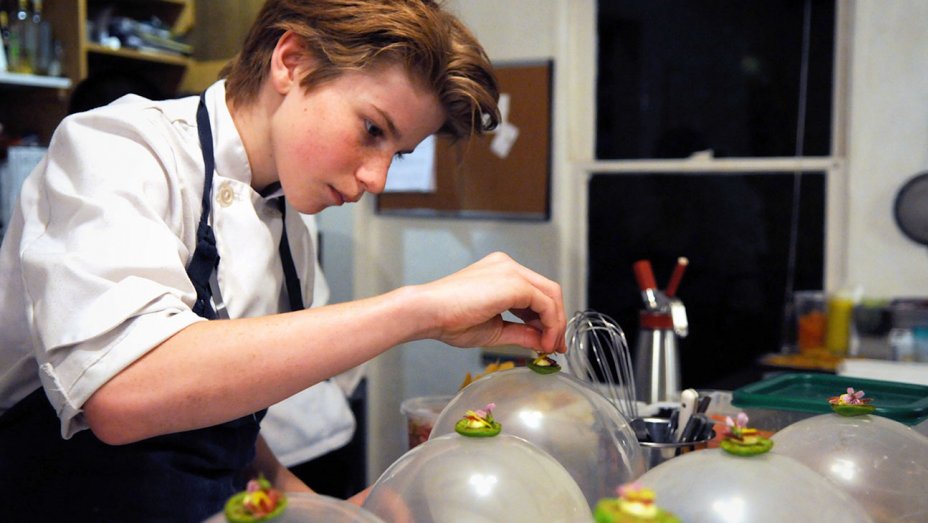Different Types Of Professional Chefs
"What are the different types of chefs?" Read on to learn the difference between the various chef titles and the tasks those chefs perform in a bustling restaurant kitchen.
The legendary French chef George Auguste Escoffier in his book Le Guide Culinaire defined certain theories of kitchen management that have been adopted by professional kitchens all over the world. Among them is the kitchen hierarchy system known as the Brigade de Cuisine which specifies the types of chefs that are a part of a normal kitchen. Not every kitchen operates under the French Brigade System, and some positions in the system may be combined depending on the size of the restaurant. However, it has provided a basic outline that restaurant owners can refer to when setting up their kitchen hierarchy and stations.
According to this Brigade system, the types of chefs are as follows:
- Commis Chef
Usually, an entry-level position when starting your career as a chef. The Commis Chef works alongside the other kitchen staff, usually, he/she will assist the Chef de Partie with food preparation. This job gives you the opportunity to see how a kitchen works first hand and to work beside an experienced cook. To get a job as a Commis Chef, you need to show some kitchen experience and a drive to work in the culinary industry. Working in a kitchen means hard work and long shifts but if you want to be a chef, it’s heaven.
- Chef de Cuisine or Executive chef: He or she is the boss in the kitchen. Normally a restaurant or chain has one executive chef. It takes years of training at a culinary academy and decades of experience to reach this topmost level. An executive chef rarely has to cook and their duties are basically administrative wherein they supervise operations, plan out menus and ensure that the kitchen is running smoothly. hey work directly below the Sous Chef and they are responsible for all the chefs working in their area. Most Chef de Parties will specialize in one culinary area (for example. Pastry Chef) and then be responsible for their team. It’s important to have good communication skills to make sure everyone in your team knows what they are doing to get food out on time.
- Executive Chef (or Head Chef) The Head Chef is the boss of the kitchen and it is a job many chefs desire to have. It takes years of experience and many Executive Chefs will have worked in many of the chef roles before finally reaching the top post so they know how the kitchen works. During a shift, the Executive Chef will be in the kitchen to oversee everything is running smoothly. They will ask the Sous Chef(s) to assist them. The Head Chef will likely not be involved in any cooking, he/she will be making sure all dishes are perfect before going out.
- Expediter
The Expediter checks the meals are perfectly presented before they leave the kitchen. They work with the kitchen staff and the servers to make sure all dishes are presented and served correctly. The responsibilities of the Expediter is usually taken by the Head Chef in a small kitchen, larger kitchens will have an Expediter near the door to check the food before a server takes it.
- Kitchen Manager. Kitchen Managers tend to work behind-the-scenes in the kitchen. They check all ingredients are stocked and equipment is working. The managers do more paperwork as it’s the Head Chef’s job to oversee the employees in the kitchen. The Kitchen Manager works with the Head Chef and the owner of the restaurant to keep the kitchen and the restaurant running efficiently.
- Pastry Chef (or Pâtissier) Pastry Chefs usually attend culinary school to train their skills. They are skilled in making desserts, pastries, bread and other types of baked goods. Pastry Chefs are valuable in the kitchen. You can find Pâtissier in hotels, bakeries, cafes, and restaurants.
- Saucier. Sauces are important when it comes to high-quality dining and the Saucier is responsible for making sure the sauces are always right.
- Fish Cook (or Poissonier) As it says on the tin, the Poissonier specializes with everything relating to fish. If a restaurant has a large section of fish dishes on the menu, the Fish Cook will be in charge of preparing and cooking the fish.
- Vegetable Cook (or Entremetier) The Vegetable Cook prepares all the vegetable dishes but he/she will also be assigned to prepare soups and egg dishes too.
- Meat Cook (or Rotisseur) The Rotisseur works mainly with meats, he/she will be responsible for preparing the meats and cooking them.
- Pantry Chef (or Chef Garde Manager) The Chef Garde Manager is responsible for all refrigerated ingredients and dishes. In large restaurants, their huge fridges need to have a chef in charge to check all food is fresh and monitor stock levels.
- Sous Chef or Assistant chef: The sous chef is immediately below the executive chef and is the person who is directly responsible for food production. Depending on the size of the kitchen there may be one or more sous chefs who are responsible for all the junior chefs and other kitchen workers. after all, the Head Chef cannot be everywhere. The Sous Chef is responsible for checking everything is working smoothly in the kitchen. Communication and an eye for detail are important skills you need to be a Sous Chef.
- Chef de Partie or Senior chef: This individual is responsible for a particular type of menu that he or she specializes or excels in. It is his or her duty to direct the preparation necessary for his specific menu.
- Line Chefs or Station chefs: Working directly under the sous chef there are various types of line chefs each responsible for a specific part of a meal.Saucier: It is their duty to prepare the master sauces required in food production. It is a very important role and the sauce chef has to be highly skilled since the sauce is a very vital ingredient especially in French cuisine.Poisoner: Also called the fish chef, they not only cook all fish and seafood dishes, but they also have to do the butchery of his raw materials. Entremetier: Vegetables, soups, rice and egg dishes are the responsibilities of the Entremetier or vegetable chef. Rottiseur: The chef responsible for roasts or meat dishes and their accompanying sauces is the roast chef or Rotisseur. Grillardin: He or she is also called the grill chef and all grilled dishes are prepared by him or her. In smaller kitchens, this duty is added to that of a Rotisseur. Friturier: The fry chef who produces all the fried items on the menu. Tournant: He or she is also called the swing chef and is the one who fills and completes the duties of any station required. Garde Manger: Also called the pastry chef is responsible for preparing cold foods like salad, cold cuts, pates, and appetizers. Patisseur: Or the pastry chef is the one who prepares all the bakery items including cakes, bread, and desserts. Boucher: Like a butcher, the Boucher cuts and bones meats and sometimes fish before the chef cooks them
It is important to keep in mind that becoming a chef requires years of training. Working in a commercial kitchen can be fast-paced in terms of daily tasks and upward mobility. Various chef and cook positions are needed to keep a restaurant running smoothly and the hierarchy can look very different from kitchen to kitchen.
"What are the different types of chefs?" Read on to learn the difference between the various chef titles and the tasks those chefs perform in a bustling restaurant kitchen.
Reference:
<https://www.webstaurantstore.com/article/359/types-of-chefs.html>
<https://blog.sfceurope.com/what-types-of-chefs-are-there-complete-list-of-chef-jobs>
<https://www.chefacademyoflondon.com/en/blog/711-types-of-chefs.html>
Search
Categories
Popular Posts



















Comments: 0
No comments